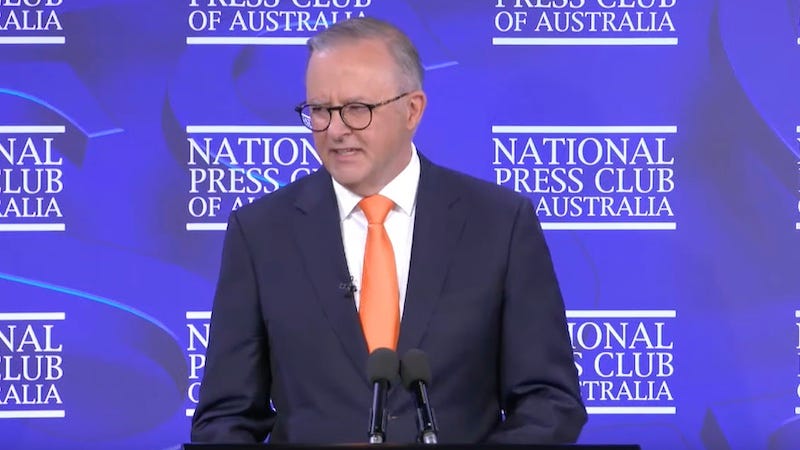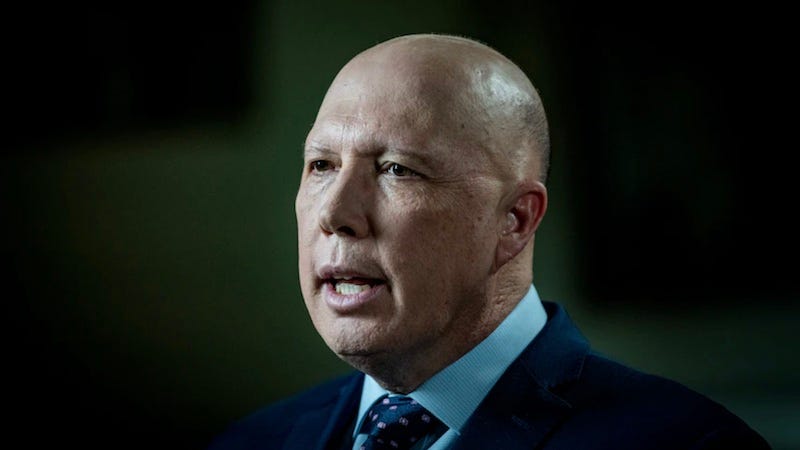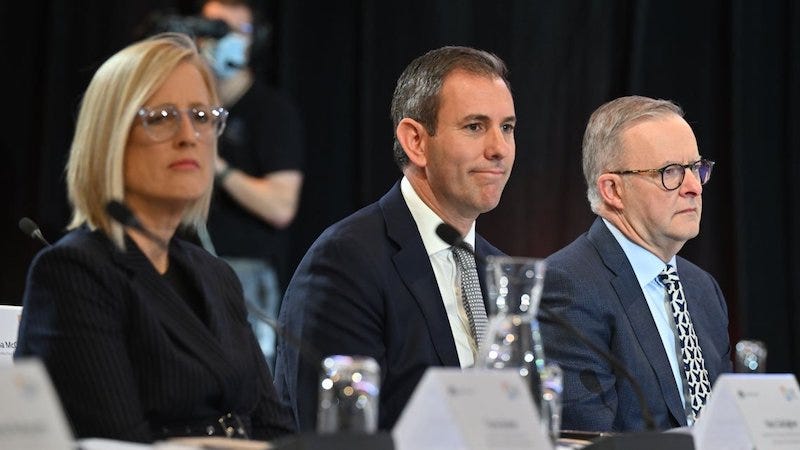The big Labor shift in fiscal policy
The Stage Three tax cuts have been adjusted to promote equity and social welfare by the Labor government.
The recent adjustments to the Stage Three tax cuts by the Labor Government represent a significant shift in fiscal policy, one that diverges markedly from the course set by the previous Coalition government in 2019. Originally, these tax cuts were criticised for disproportionately benefiting high-income earners while providing minimal support to lower and middle-income individuals and this approach was seen as antithetical to the Labor Party’s core principles, yet the party supported it with considerable reluctance in opposition, and then after they formed government after May 2022 – up until last week. The question of why it took the Labor government such a long time to amend this policy is complex, involving strategic considerations and the timing of the announcement.
The Labor Government’s eventual decision to adjust the tax cuts so that almost 85 per cent of wage earners would benefit more equitably marks a critical departure from the policy’s initial design. The original plan, which would have seen individuals on a $200,000 income receive a $9,000 tax cut, was halved to $4,500 under the revised scheme. This change aligns more closely with the Labor Party’s ideological commitment to equity and social welfare, challenging the perception of inaction or reluctance to amend policies inherited from previous administrations.
The strategic timing of the announcement, made during a relatively quiet period in January, suggests a calculated move to ensure maximum visibility and impact, avoiding the risk of the message being lost amidst other news. This period was marked by minor controversies led by the Coalition, such as the debate over Australia Day merchandise at Woolworths, which ultimately did not overshadow the tax cut announcement. The Labor Government’s strategy appears to have been to wait for an opportune moment to introduce these changes, thereby maximising the political and social impact.
Criticism of the tax cuts’ adjustment has emerged from the usual quarters—such as key elements of the media, including News Corporation—that reducing the amount high-income earners receive as a tax cut is somehow unjust. However, this perspective overlooks the broader aim of tax policy to achieve a fair distribution of tax burdens and benefits across all income brackets. The revision of the Stage Three tax cuts has been welcomed by many economists, who argued that the original plan was regressive and would exacerbate income inequality. By making the tax system less regressive, Labor seeks to address these concerns, promoting a more equitable distribution of wealth.
The reluctance of the Labor Government to amend the Stage Three tax cuts earlier was attributed to fears of political fallout, including accusations of breaking promises and being fiscally irresponsible. However, the government’s decision to proceed with the adjustments reflects a prioritisation of policy effectiveness and equity over political expediency. This move is consistent with the principles traditionally associated with Labor governments, which generally prioritise the welfare of low and medium-income earners.
The adjustment of the Stage Three tax cuts is a significant policy shift that seeks to rectify the regressive nature of the original plan. By spreading the benefits of tax cuts more evenly across income groups, the government aims to promote fairness and reduce income inequality. This decision, while politically risky, underscores the government’s commitment to its ideological foundations and its willingness to make tough decisions in the interest of promoting social welfare. The strategic timing and handling of the announcement demonstrate a nuanced understanding of the political landscape and the challenges of governing in a complex, often contentious, policy environment.
Media critique in the wake of tax cut adjustments: Navigating broken promises and policy substance
The critique of mainstream media’s handling of the policy shift on Stage Three tax cuts underscores a broader issue with political journalism and public discourse. The focus on the narrative of “broken promises”, rather than the substance and implications of policy changes, reflects a pervasive challenge in how political news is covered and consumed. The media’s anticipation of a policy reversal, followed by an immediate shift to accusations of “broken promises” upon the announcement of such a change, illustrates a dynamic where the complexity of governance is often overshadowed by the pursuit of controversy and conflict.
The historical context provided by referencing past leaders’ unfulfilled promises—such as John Howard’s introduction of the GST in 2000 and Tony Abbott’s cuts to education, health, and public broadcasting in 2014—serves to highlight a perceived double standard in media and public reactions to policy shifts. The intense scrutiny faced by the Labor Government over the adjustment of tax cuts, contrasted with the relatively muted response to previous administrations’ policy reversals, suggests an inconsistency in how broken promises are judged and politicised.
The aggressive questioning faced by Prime Minister Anthony Albanese at the National Press Club, and his defence of the policy change as a necessary response to evolving economic circumstances, underscores the government’s attempt to navigate the delicate balance between political accountability and pragmatic governance:
Michelle Grattan: “Prime Minister, can I take you up on this point about not adding to inflation?”
Phillip Coorey: “Once the cost of living crisis is over, do something about bracket creep?”
Clare Armstrong: “Why should Australians trust that you won’t lie to them again?”
David Crowe: “When you name those factors as reasons for this change, aren’t you just looking for excuses here? Why didn't you level with voters at the election in May 2022?”
Melissa Clarke: “You said that you asked Treasury for advice this summer—given families and many households have been feeling pain from those economic circumstances for more than a year. Why have changing Stage Three tax cuts been off the table until this summer?
Olivia Caisley: “You told Australians time and time again that there’d be no changes to the Stage Three tax cuts, despite privately doing the exact opposite. Will you rule out bringing in a retirees tax or any changes to negative gearing?”
Joe Kelly: “Labor MPs are concerned about rebuilding trust now, with the public following your decision. You promised to do politics differently, to bring integrity honesty back to politics. Isn’t it important that you level with the Australian people today? And admit that you breached an election commitment? Is that something you can do?”
Albanese’s emphasis on acting in the national interest, and the portrayal of the decision as a difficult but necessary deviation from previous commitments, aimed to reframe the narrative around responsible leadership rather than political expediency:
Anthony Albanese: “This is the right decision done for all the right reasons. And as Prime Minister, I will always do what I believe is in the national interest. And good government is about being responsive is about doing what is necessary, not what is easy. And I want to be known as a prime minister, who had the ticker to say what was needed and to set about doing it.”
The criticism of the mainstream media’s focus on the “broken promise” narrative, to the exclusion of a more nuanced discussion on the merits of the policy change, reflects a broader dissatisfaction with the state of political journalism. The expectation that journalists should delve deeper into the implications of policy decisions, rather than fixating on the political game of promises made and broken, suggests a desire for a more substantive and informative public discourse.
The analysis of the tax cut adjustments as a strategic move by Labor, driven by both economic necessity and a commitment to equitable policy, challenges the notion that the change constitutes a straightforward breach of trust. Instead, it is presented as an adaptation to changing economic conditions and a fulfillment of the party’s broader ideological commitments to supporting lower and middle-income earners.
This discussion of the Stage Three tax cuts adjustment reveals the complex interplay between political strategy, economic policy, and media narratives. The government’s decision to prioritise economic equity and responsiveness over rigid adherence to previous commitments is defended as a reflection of responsible governance. Meanwhile, the critique of the media’s focus on the broken promise narrative highlights a need for a more nuanced and informed approach to political reporting, one that better serves the public’s understanding of the challenges and trade-offs inherent in policymaking.
Dutton’s broken promise narrative clashes with Labor’s tax cut realignment for greater equity
The opposition’s strategy, spearheaded by leader of the Liberal Party, Peter Dutton, to frame the adjustment of Stage Three tax cuts as “a breach of trust”, with implications for other contentious issues like negative gearing and franking credits, represents a classic political manoeuvre aimed at capitalising on perceived inconsistencies in government policy.
However, this approach encounters a fundamental challenge when the policy change in question results in tangible benefits for the majority of wage earners. The decision to recalibrate the tax cuts, and providing greater relief to 85 per cent of wage earners than initially proposed under the Coalition, underscores a strategic realignment towards equity and fairness in fiscal policy. This realignment, while criticised by the opposition as a “broken promise”, could instead be interpreted by the public as a responsive and adaptive measure to current economic conditions, enhancing the government’s credibility with voters who prioritise substantive outcomes over strict adherence to campaign promises.
The National Party leader David Littleproud’s comments regarding the financial pressures faced by people earning around $190,000 annually illustrate a disconnect between political rhetoric and the economic realities of the average Australian. By positioning individuals in the top 5 per cent of income earners as representative of the broader electorate’s financial challenges, the opposition risks alienating a significant portion of the population for whom such incomes are far beyond reach. This perspective highlights the disparity between the opposition’s narrative and the lived experiences of the majority of Australians, potentially undermining the effectiveness of their critique.
The opposition’s focus on high-income earners’ reduced tax benefits neglects the progressive nature of taxation, where tax rates increase with income to ensure a fairer distribution of the tax burden. This principle ensures that while all income earners receive some form of tax relief, the system remains designed to benefit those at the lower end of the income spectrum more significantly. The misunderstanding or misrepresentation of how progressive taxation works, especially in the context of bracket creep and the structure of tax brackets, suggests a need for a more informed debate on tax policy that goes beyond the simplistic portrayal of tax cuts as universally beneficial or detrimental.
The contention that adjusting tax cuts to provide greater relief to the majority while still benefiting high-income earners—albeit to a lesser extent—constitutes a betrayal, fails to account for the complexity of governing in the public interest. Government decisions must balance a range of factors, including economic conditions, social equity, and fiscal sustainability. Labor’s approach to modifying the Stage Three tax cuts reflects an attempt to navigate these considerations, prioritising broad-based relief over adherence to previous commitments that no longer align with the current economic landscape or the principles of equity and fairness.
In this context, the debate over the Stage Three tax cuts adjustment and the opposition’s narrative of broken promises reveals deeper questions about the role of government, the nature of political promises, and the priorities that should guide policy decisions. As the government seeks to address the immediate and long-term needs of the Australian populace, the challenge lies in communicating the rationale behind policy shifts and ensuring that the benefits of such changes are widely understood and appreciated. This ongoing dialogue between the government, the opposition, and the electorate is essential for maintaining trust and ensuring that policy decisions reflect the evolving needs and values of society.
Albanese’s bold move on tax cuts: A turning point for governance and policy reform
The potential legislative success—due to be debated in Parliament this week, but very likely to pass—of the amendments to the Stage Three tax cuts, is a significant moment for the Prime Minister and his administration. It underscores the strategic process of modern governance, where the interplay between political negotiation, public policy, and media narratives shapes the legislative process. The willingness of Labor to revise these tax cuts, despite potential media backlash and political opposition, may mark a critical juncture in its tenure, revealing a newfound assertiveness in pursuing its policy agenda in other areas. This moment could be reflective of a broader realisation within the Albanese government that, despite the inherent challenges and opposition, it possesses the mandate and capacity to enact significant and positive changes aligned with its ideological foundations.
The speculation about the government’s future direction, including the consideration of reforms to negative gearing and franking credits, illustrates a potential shift towards more bold and transformative policy initiatives. Such a shift would not only address areas of economic inequality but also signal the government’s commitment to leveraging its electoral mandate to challenge entrenched interests and promote a more equitable fiscal policy landscape. This approach, while likely to encounter resistance, represents a crucial step in redefining the government’s relationship with both the media and the opposition.
The critique of the mainstream media and opposition figures such Peter Dutton—who essentially engages on a purely negative and destructive basis—speaks to a broader challenge facing the government: navigating the complex and often adversarial political landscape without being unduly constrained by the fear of media criticism or opposition sabotage. The government’s potential embrace of a more assertive and proactive policy stance may serve as a counterpoint to the strategy employed by the opposition, which has been characterised by attempts to exploit cultural and political divisions.
Labor’s focus on inclusive and constructive policy-making, as opposed to the Liberal Party’s tactics of engaging in or responding to culture war provocations, offers a path towards consolidating its position by appealing to the broader electorate’s desire for stability, fairness, and progress.
For the opposition, there are new challenges faced by Dutton and the Liberal Party in repositioning themselves as a viable alternative to the government. The necessity of capturing the political centre, alongside the internal deliberations about the party’s leadership and strategic direction, highlights the broader dynamics of political competition and the search for relevance in an evolving political landscape: electoral success is never found by searching for the extremes on the left or the right of the electorate—elections are always won by engaging people in the centre, not the extremists on the edge of society.
By potentially embracing a more courageous and policy-driven approach, the government may set a precedent for addressing longstanding issues of inequality and economic fairness. This development, while fraught with challenges, suggests a critical moment in Australian politics, where the pursuit of transformative change becomes a defining characteristic of governance.












